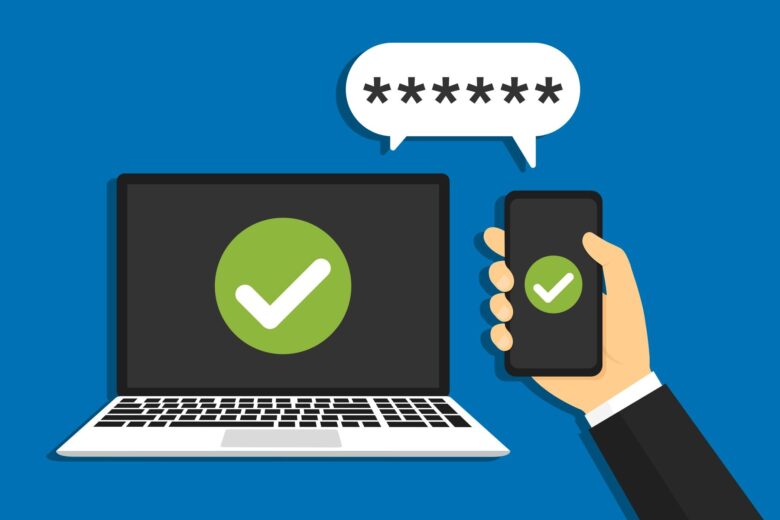As our lives become increasingly digital, keeping your online accounts secure is more important than ever. Passwords alone are no longer enough to stop cybercriminals, as many people use weak or easy-to-guess passwords. Data breaches and phishing attacks can easily compromise even the strongest passwords. This is where two-factor authentication (2FA) comes in. It enhances the security of your accounts by adding an extra layer of protection, making it harder for anyone who shouldn’t be able to log in. By learning the basics of two-factor authentication, you can stay safe online and protect your personal and financial information.
What Two-Factor Authentication Means
Two-factor authentication is a security measure that requires two different pieces of evidence before someone can log in to your account. The first is usually a password, you know. The second is an extra step, usually something you have, like your phone, or an identifying piece of information, such as your fingerprint or face. If a hacker steals your password and uses these two methods together, a breach becomes much more difficult. This approach can significantly improve your account security and provide a stronger defense against frequent cyberattacks.
Why Two-Factor Authentication is Important
Two-factor authentication is crucial because it offers more security than just a password. Cybercriminals often use stolen password databases, phishing attacks, or brute-force attacks to compromise accounts. A mere password can compromise your account within seconds. Even if you enable two-factor authentication, attackers still need access to your second verification method, which is often more difficult to obtain. Using this method is one of the best ways to reduce the risk of identity theft, financial fraud, and unauthorized access to private accounts.
Common Two-Factor Authentication Methods
There are many two-factor authentication methods, and understanding them can help you choose the best one for your account. Receiving a verification code via text message or email is a common method. Another method is using an authenticator app that generates a temporary code directly on your phone. Biometric authentication (such as fingerprint or facial recognition) and hardware tokens linked to your device are two more advanced options. Each of these methods has its advantages and disadvantages, but they all serve the same purpose: providing additional protection beyond your password.
Two-Factor Authentication: What It Does for You
Two-factor authentication not only makes your account more secure but also gives you peace of mind. Knowing that your private information isn’t just safe with your password allows you to use online services with more confidence. It can protect your email, bank accounts, cloud storage, and even social media from hackers. Many companies claim that two-factor authentication can significantly reduce the risk of successful attacks. For individuals, this means that enabling two-factor authentication significantly reduces the risk of losing personal data or money.
Disadvantages of Two-Factor Authentication
While two-factor authentication can significantly improve security, it’s not 100% foolproof. Receiving verification codes via text message is one way scammers can obtain your number and trick your phone provider into porting it to their device. Other solutions rely on users to secure their devices, as losing your phone can make logging in to your accounts difficult. Even with these issues, two-factor authentication is still much more secure than using a password alone. Using more advanced technologies like authenticator apps or biometrics can make it even more secure.
Setting Up Two-Factor Authentication
Setting up two-factor authentication is generally straightforward. Most major internet services, such as banks, email providers, and social media networks, offer it as a security option. You can usually find it in the security settings or account settings. After enabling two-factor authentication, you may need to link your phone number, download an app to verify your identity, or register for biometrics. Following the platform’s instructions ensures your account is secure. It only takes a few minutes, but it can have a significant impact on your online security.
Future of Two-Factor Authentication
As technology evolves, two-factor authentication will evolve along with it. Fingerprint and facial recognition are becoming increasingly common, but new technologies like hardware keys and passwordless logins are also gaining popularity. Two-factor authentication is intended to improve security and user convenience. In the future, we may see even simpler authentication methods that offer optimal protection without any additional effort. Currently, two-factor authentication is one of the best ways to protect your digital life.
Conclusion
Two-factor authentication is one of the best ways to secure your online accounts. It requires a password and a second form of authentication, making it significantly more difficult for hackers to break into your account. While not perfect, it does significantly reduce the risk of identity theft and financial fraud. Two-factor authentication is easy to set up, and once enabled, it quickly becomes a regular part of your login routine. With online risks increasing, two-factor authentication is a simple and effective way to protect your digital security.
FAQs
1. What is two-factor authentication?
Two-factor authentication is a method of securing your account by requiring two different forms of verification, such as a password and a verification code sent to your phone.
2. Do you really need two-factor authentication?
Yes, it makes your account even safer by adding an extra layer of security beyond your password. This makes it harder for hackers to gain access.
3. What’s the best way to use two-factor authentication?
Authentication apps and biometrics are generally considered better than SMS verification codes, which are easier to hack.
4. Can I use two-factor authentication for all my accounts?
Most major platforms, such as banks, email providers, and social networks, support two-factor authentication. However, some smaller services may not yet offer this feature.
5. What happens if I lose my phone with two-factor authentication enabled?
If you lose your phone, most platforms offer ways to help you log back into your account, such as recovery codes or other methods to verify your identity.




